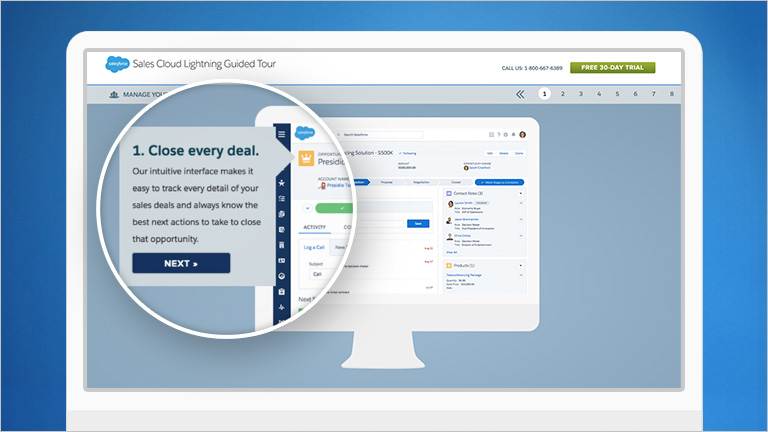Outstanding omnichannel experiences hinge on ensuring the right teams have access to high-quality and accurate customer data. But what do customers actually want? And how can teams get this valuable data?
In this blog, we’re going to explore how Al Malki Group and Umrahme are utilising their data and creating excellent omnichannel experiences.
Customer expectations revealed in Salesforce report
It should come as no surprise that customer expectations have dramatically shifted. They want a singular, connected, personalised experience across an ever-growing range of touchpoints. And they expect the pandemic to drive this change, rather than inhibit it.
At least, that’s what our fourth State of the Connected Customer report found – 78% of customers believe current crises should catalyse business improvement. This inevitably has created challenges for businesses around the world, but it has also brought opportunities.
Why it’s time to create omnichannel experiences
We found that 61% of customers say COVID-19 has elevated their expectations of companies’ digital capabilities. Consumers want interconnected online experiences that are seamless across different channels and/or departments.
Top 10 preferred channels to create your omnichannel experience
- Phone
- In-person
- Online chat
- Mobile apps
- Messenger apps
- Text/SMS
- Online portals
- Video chat
- Social media
You can start your omnichannel customer journey by sending them an email with a new or discounted offer. Make sure to check the click-to-open rate (CTOR), which is the percentage of email subscribers who clicked the offer in your email versus the total number of people who simply opened it.
Once people click on your email offer, ensure there is an online chat available on your website that gives visitors the choice to chat virtually or call your company number. If your offer leads to a gated landing page, make sure it’s engaging enough so people want to fill out the form and give you more information. This information will be vital to your sales team who will use it to follow up with new prospects.
It’s also important to think about how this same omnichannel experience translates to mobile. Do you have a dedicated app for your business? Is it easy to access your offers via mobile device? Since nearly half of users browse the internet on their mobile phones, this is essential to incorporate into your user journey.
How Al Malki Group delivers personalised omnichannel experiences
Al Malki Group has been able to deliver omnichannel experiences fit for its luxury retail customers in extremely challenging circumstances. But such success stories are not the norm across the region and there’s a pressing need to understand the path to successfully capitalising on these opportunities.
So how can businesses meet customer expectations?
Here are six key pieces of advice to help you create your own omnichannel journeys that will delight your customers.
1. Make customer experience management a priority
Businesses are getting laser-focused on meeting customer expectations. Customer satisfaction was listed as the top priority, with 87% of service teams tracking it as their most important KPI.
Salesforce Marketing Cloud Guided Tour
See Marketing Cloud in action with this hands-on experience. Discover new ways to unite your marketing strategy with sales and service!

And, as Trailblazing luxury retailer Al Malki can attest, meeting customer expectations with a personal and omnichannel experience is a recipe for success.
Al Malki’s customers expect an experience as personal and well-crafted as the products and services they’re buying. To support the highest standards of customer experience management that keep its discerning customers coming back, Al Malki needed to go deep into customer data.
2. Empower your teams with the right data
To deliver on their customer experience goals (to offer a more personalised service and improve customer experience) Al Malki needed a way to equip their teams with data on purchasing history, preferences, what type of products the customer tends to buy, and many more.
“For us, this was only possible with using Salesforce Service Cloud – it brings all our data into one easily usable dashboard – this empowers our teams to build one-to-one experiences with our customers in which they not only have the information they need to quickly deal with customer requests, they can also make the kind of up-sell recommendations that customers actually want,” says Daniel.
In fact, our report found that across the globe, a massive 91% of customers said a positive customer service experience would make them more likely to make another purchase in the future.
This means that following Al Malki’s example, not only allows your company to do great business today, it has a huge impact on future sales too.
Salesforce Service Cloud Lighting Guided Tour
Learn how to connect every interaction and build the kind of experiences that drive loyalty, trust, and growth.

3. Connect online and offline customer journeys
Delivering a great digital omnichannel experience is the cornerstone of successful transformation, but it’s also vital to ensure your customer journeys remain connected across both digital and physical touchpoints.
Customers want to feel they are having meaningful and informed, one-to-one interactions rather than being bounced from department to department in a series of disconnected conversations.
“With luxury retail, customers don’t just want to shop. They want integrated experiences across all channels, connecting offline in-store interactions with online experiences and social media channels – you can’t drop the ball,” says Daniel.
Far from being limited to the luxury retail sector, our report found a huge 76% of customers expect consistent interactions across departments. The key to creating seamless interactions starts with a single source of truth.
4. Create a single source of truth
By creating a single source of truth for customer data, you allow a seamless flow of data. This means that data from one touch point can easily be leveraged to enrich the customer journey at another. For Al Malki, Mulesoft (which connects any application, data, and device with APIs) was key to making that happen.
“By using MuleSoft as our integration layer, we can create and maintain a golden record for our customers. Whenever there is an interaction, be that a point of sale at an in-person boutique or online, our system will call through APIs to our Service Cloud to identify these customers,” says Daniel. “It gives a really clear picture of our customers’ needs – meaning we are able to fully cater for them.”
There are other important benefits too, using Commerce Cloud allows Al Malki’s customers to access real-time product availability online before they make their journey to an in-person boutique.
Such considerations help show empathy for your customers – a crucial factor given that our rapport found 68% of customers expect empathy from brands.
5. Scale to meet massive demand with marketing automation
Umrahme, (a division of Holidayme) is an online travel agency which specialises in travel packages for pilgrims. They have millions of customers across B2B and B2C, in over 40 countries.
As a crucial part of a Saudi Arabian government initiative – tasked with attracting 30 million pilgrims a year by 2030 – Umrahme had to ensure they could scale to meet the huge demand.
“Numbers were steady at around 6-7 million per year, but over the last year that’s increased to 10-12 million,” explains Bechir.
In addition to joining up their multiple touch-points using Salesforce (which saw their market share grow from 25% to 80%), they have enabled sustainable growth via marketing automation.
Traditional email marketing approaches are not fit for purpose when delivering connected user journeys to millions of customers. To achieve their goals, Umrahme turned to Salesforce’s Pardot.
“We’ve minimised attrition and improved the performance of campaigns by up to 10%. Pardot has really opened our eyes to what a more sophisticated solution like Marketing Cloud can do for us”, adds Bechir.
6. Inspire your teams with self-service tools
Implementing Salesforce also led to a cultural change amongst Umrahme’s teams. As the impact of Salesforce on their roles became clear, teams felt empowered to request optimisations that would help them optimise their own workflows and improve every customer interaction.
As Bechir explains “We have a customer satisfaction score of over 90% but our teams are hungry to improve – the self-service features of Service Cloud enable them to continuously develop and enhance the platform. Whenever there is a pain point, we adjust. As an organisation, we’re excited to keep expanding the functionality to help us transform the customer experience.”
The three-stage digital transformation framework
The biggest digital transformation winners will be the businesses that ensure the customer experience is at the centre of their thinking, and make smart technology choices which enable that.
Working with incredible Trailblazers like Umrahme and Al Malki has allowed us to develop a three-stage digital transformation framework. If you take anything away from this piece – make it this:
Step 1: Reimagine digital around the customer
Today’s most successful brands build personalised journeys that tailor every interaction to the customer’s needs. All departments are connected and aligned around the end-to-end customer experience.
Step 2: Maintain consistency across channels
Delivering a consistent, omnichannel experience, requires a single source of truth. This means capturing, managing, segmenting, and activating every piece of customer data for secure business-wide access.
Step 3: Adapt and scale
In the face of shifting expectations, you need to be able to innovate, scale, and even pivot where necessary. By empowering customers, partners, and employees with the right digital tools and automation capabilities, you can bake adaptive agility into your culture.
So if you want to follow in Umrahme and Al Malki’s footsteps, and see the impact of Salesforce on your business, why not learn more about a Marketing Cloud Guided Tour or a Service Cloud guided tour?
























